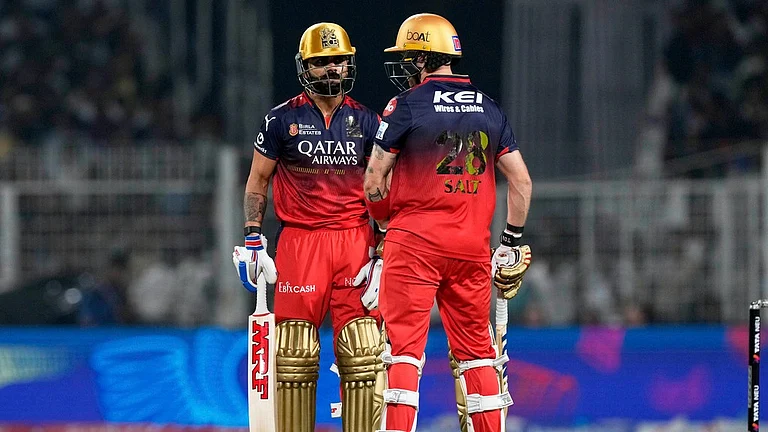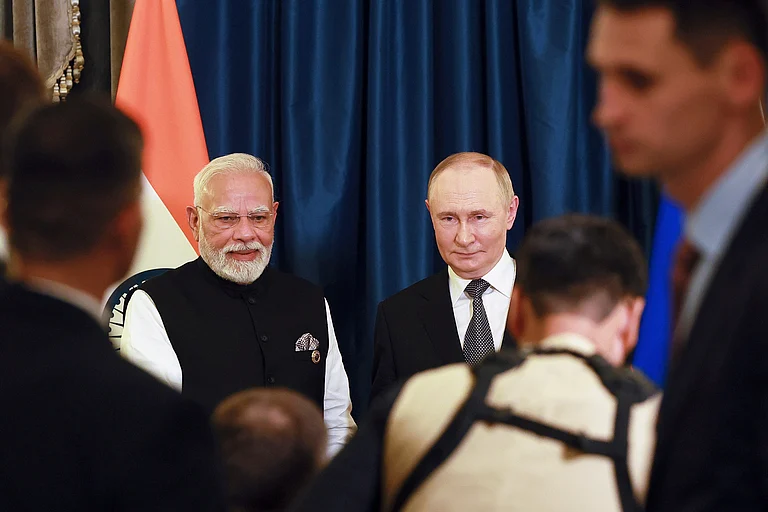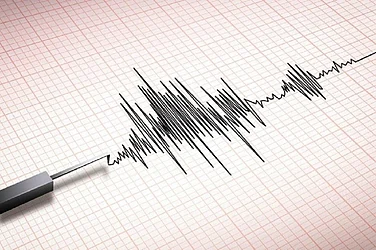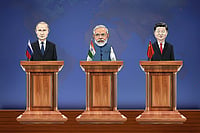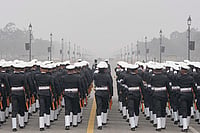This story was published as part of Outlook's 11 November, 2024 magazine issue titled 'Whitewash'. To read more stories from the issue, click here
Unlike China, Iran, Russia or the Middle East, the world’s most populous country, India, has barely been mentioned in the US presidential election cycle. India is fortunate in that even in a deeply polarised American polity, close relations enjoy strong bipartisan support. The ideal for New Delhi would be that the next president’s administration takes the final steps towards converting the current comprehensive, global and strategic US-India partnership into ‘‘the defining partnership of the twenty-first century”. On the policy front, references to India during the campaign cycle have only been in passing. Both candidates support robust India-US relations and both parties have long-time experts in their ranks who are keen to deepen the partnership.
If Donald Trump returns, his presidency is likely to be characterised by strong personal relations with Prime Minister Narendra Modi. These will be coupled with a transactional foreign policy where public differences over trade, market access and immigration will have to balance strategic imperatives. A President Kamala Harris, on the other hand, like President Joseph Biden, is more likely to focus on strategic convergences, in seeing India as the ideal counterweight to China, and not allowing differences to become divergences.
The bedrock of the US-India partnership has been shared values and mutual strategic interests. The multi-faceted US-India partnership is underpinned by strong commercial ties, close defense cooperation and shared strategic considerations.
India’s strategic location, economic potential and military capabilities make it an ideal partner for the United States in a key spot: continental Eurasia and the maritime Indo Pacific. India is also an important partner as the US seeks to pushback against the military and economic rise of China, both in the Indo Pacific and beyond. India’s own decades old rivalry with China further strengthen these shared interests.
Historically, Democratic presidents going back to Harry Truman have embraced the notion that India’s rise, in and of itself, is good for the US. While Democratic administrations would like India to grow faster economically and be a partner in countering China, it has rarely been about specific quid pro quo. Compared with that strategic altruism, most Republican presidents have viewed relations with India through the prism of how India’s economic growth would benefit American companies. The exceptions were the administrations of Dwight Eisenhower (1953-61) and George W. Bush (2000-08).
For the last three decades, ties have flourished under both Democratic and Republican administrations. This is a function of geopolitics and recognition inside the US that having the world’s largest democracy and soon to become third largest economy as a partner is in American national security interests.
The aim should be to ensure that even when countries disagree on issues, they continue to have conversations.
During the first Trump administration, peer competition with China enabled a deepening of the strategic partnership with India. Not only was India mentioned prominently in the 2017 National Security Strategy, but India was one of the key countries when the concept of the ‘‘Free and Open Indo Pacific’’ was rolled out in 2017.
It was under the Trump administration also that the Quadrilateral grouping—the Quad, comprising Australia, Japan, India and the US—finally became a reality. While it was under that the Obama administration in 2016 that India was designated a Major Defense Partner by the US, it was under the Trump administration that India was elevated to Strategic Trade Authorisation-1 (STA-1) status. This allowed India license-free access to a wide range of American military and dual-use technologies.
However, former President Trump has a disdain for experts and prefers a transactional approach to international relations. He also prefers personal ties with leaders over an institution-led approach. This is the approach he adopted with India and PM Modi last time and will likely continue this time too.
A second Trump administration could be different from the first one. The need to strengthen alliances and partnerships against China in the Indo-Pacific might lead to reconsideration of the default transactional approach. If that happens, then it would be reminiscent of Eisenhower and Bush 43 play books. However, it is unlikely that the former president has changed or will fully alter his core worldview.
Liberal Americans have argued since the nineteenth century about the need to help India play a greater role on the global stage. India’s civilisational past, population, economic potential and democratic example attracted, and still attract, liberals to India. An array of Democratic presidents has believed that India’s democratic credentials, its economic promise and military capability make it the ideal partner and alternate model to China in Asia.
On the strategic front, the Biden administration continued the Trump administration’s policies towards China, and further deepened ties with India. A Harris administration is likely to continue those policies, including the focus on the Indo Pacific and emphasis on groupings like the Quad.
While many in India and in the Indian community in the US focus on her Indian heritage, the vice president has referenced those only in some interviews and talks.
The strategic contours of the India-US partnership will continue irrespective of who wins the presidency on November 5, and there will be areas of friction, some new and some old.
Former President Trump’s mentions of India, during this campaign cycle, have centred around India’s tariff barriers and market access, something he has noted for some years now. It is likely therefore that the trade issue will occupy front and centre once again if he returns to the office.
A potential Harris administration, however, will continue policies like those of the Biden administration and work to resolve differences behind doors and be more understanding of India’s desire for indigenisation and protectionist policies.Immigration remains a key issue for the former president. In his first term, his administration had imposed restrictions on visas for students, and workers and permanent residency or Green Cards. These had an adverse impact on many Indians.
Further, unlike during the first Trump presidency, now there are illegal Indian immigrants crossing from Mexico and Canada. In 2023 alone there were 97,000 undocumented Indian immigrants across the US. Thus, in addition to trade, immigration will also be an irritant under a future Trump administration but is unlikely to be one under a Harris administration.
Over the last two years the two countries have deepened their partnership in the high technology domain under Initiative for Critical and Emerging Technologies (iCET). This initiative is likely to continue irrespective of who becomes president primarily because of “the China factor” and the need to compete against China in the field of high technology. Similarly, the deepening defense relationship, including cooperation and co-development, is also likely to endure. Having India as a partner, who pushes back against China’s military aggression will be important to a Democratic and Republican administration. The defense and tech dimensions of this partnership also have strong bipartisan support in the US Congress.
An area of friction, irrespective of who comes to power, will pertain to democracy and religious freedom. A Democratic administration is historically seen as applying more pressure on these issues, but the Biden administration chose to have conversations behind closed doors. The Harris administration too may prefer private pressure to public critique. However, conservatives and Republicans care about both religious and economic freedoms. So those in India who believe a Trump administration will apply less pressure on these issues should think again.
The India-US partnership is now a multi-faceted one that ranges from the arenas of military and economics to a knowledge partnership in high technology, space and cyber, and healthcare. It is likely to endure past the US election as it is based on the national interests of both countries and underpinned by shared values. However, Indians like other American partners, will have to accept that a strategic partnership cannot be fully friction free. The aim should be to ensure that even when countries disagree on issues, they continue to have conversations.
(Views expressed are personal)
MORE FROM THIS ISSUE
Aparna Pande is director of the Initiative on the Future of India and South Asia at the Hudson Institute
(This appeared in the print edition of Outlook dated November 1, 2024 as 'An Ideal Couple?')








